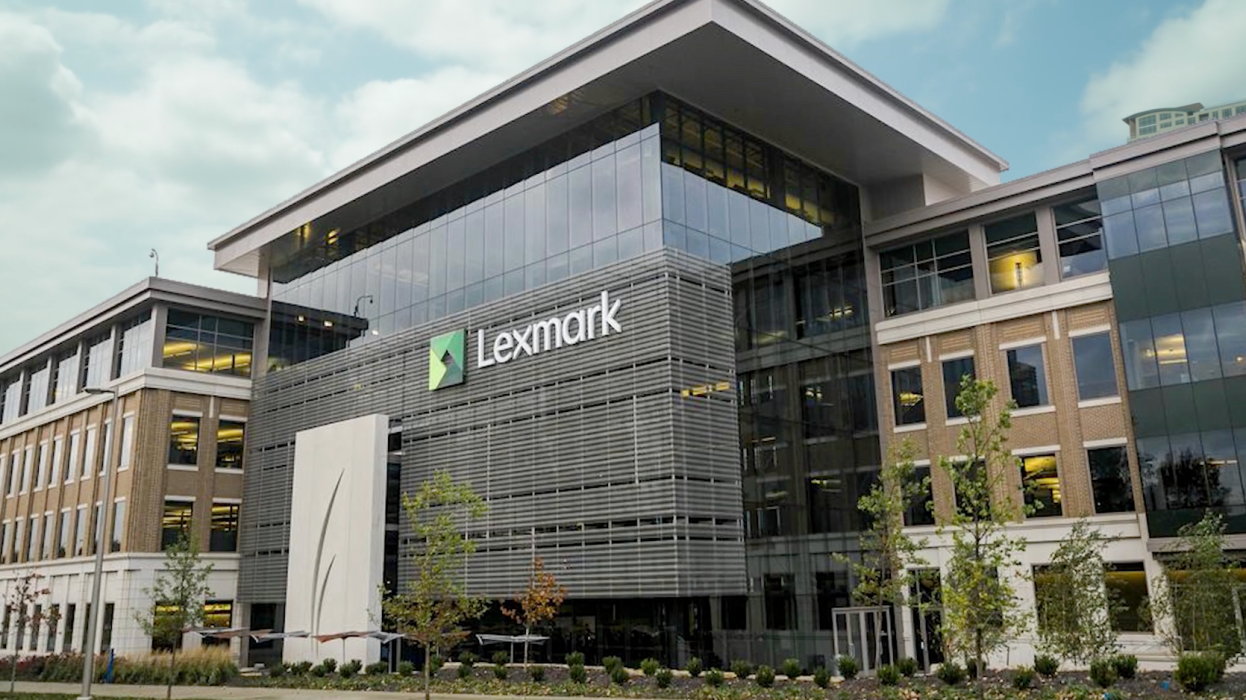Over its three-decade history, Lexmark has grown from its origins as a manufacturer of the office workhorse—the photocopier—to become a pioneer in networked imaging and IoT solutions, managing more than 7 million printing devices in more than 170 countries.
To align the evolution of digital imaging technology with the document management needs of the enterprise, Lexmark created a global print and services platform that supplies services from a central hub. As the company perfected its own IoT and edge network, Lexmark recognized an opportunity to harness its IoT expertise, creating the Lexmark Optra IoT Platform to enable other makers of connected devices to deploy, manage and maintain their own IoT and edge products using the Lexmark digital ecosystem.
“If you think about imaging, a printer is really an IoT device. We wanted to provide the human touch for our customers, to ship supplies when needed, to whom they’re needed and with supply chain challenges, to extend the life of these devices,” says Vishal Gupta, global CIO and CTO, Lexmark International.
Each Lexmark printer has as many as 125 sensors that collect various data, allowing the company to monitor everything from optical instruments to ceramic heating elements to paper feed pressure. Connecting this sprawling digital ecosystem has enabled Lexmark to deliver remote services from predictive maintenance to supply replenishment and document management, making it one of the world’s largest IoT and edge networks.
“We have manufactured about 30 million printers. We know how to secure them, how to manage them, how to remotely enable the outcomes our customers need,” says Gupta. “Our vision is to help our customers leave a lasting impression in their world and, as an innovation platform, that’s what our IoT and edge offerings enable them to do.”
Modernizing for a hybrid, multi-cloud world
Operating a vast digital infrastructure of this scope and scale poses formidable challenges. Lexmark used a dozen on-premises data centers dispersed across a global network, all running on the VMware vSphere® cloud compute platform. As the digital technologies matured and customer demands became more complex, Lexmark needed to modernize its digital infrastructure to support both traditional and cloud native applications in both its on-premises and public cloud workloads—all with a unified system to manage the estate as a single entity.
Already familiar with VMware vSphere, Lexmark chose vSphere+™, an enterprise workload platform that brings cloud benefits to on-premises workloads by deploying high-value cloud services to quickly build, run, manage, and secure traditional and next-gen applications. The vSphere+ platform is a cloud-connected subscription that provides centralized management for an entire distributed environment through a cloud console. vSphere+ delivers a single locus of control, enabling Lexmark to manage all its distributed data centers as one.
“We’re moving to a hybrid, multi-cloud world,” says Gupta. “We’re going from 12 somewhat homogenous data centers to maybe half that number, with three different clouds, Azure, AWS and Oracle.”
Adopting a multi-cloud strategy gives Lexmark many advantages. The ability to use any cloud allows developers the freedom and flexibility to build applications that use the best features of each. Integrating on-premises data centers with any number of public clouds is a plus. And of course, vendor lock-in is no longer an issue.
Simplifying infrastructure complexity and accelerating innovation with DevOps services
Though using an array of platforms can amplify infrastructure complexity, and pose security and management challenges, vSphere+ allowed Lexmark developers to run their cloud deployments in much the same way as their on-premises assets, making for a seamless experience.
“When you’re in the middle of infrastructure transformation, you have to ensure that you’re getting the agility without the complexity,” says Gupta. “We use vSphere+ to help reduce complexity—now I don’t have to stand up separate teams for each environment. I can have a holistic team that manages all these infrastructures as one.”
For Lexmark, this modernized infrastructure delivers the flexibility and capabilities necessary to deliver new subscription offerings. Developers enjoy a suite of services that streamline networking, storage and management for Kubernetes workloads. By giving developers access to an enterprise-ready DevOps environment, Lexmark can seamlessly build and run containerized applications. And using vSphere+ allows Lexmark to more efficiently manage GPU resources and leverage GPU-based acceleration to enable its data science team to create a variety of artificial intelligence and machine learning initiatives.
“When you have infrastructure that’s elastic, predictable, easy to secure and operate, it gives the freedom to the developers to essentially innovate at scale and innovate at speed,” says Gupta.
Integrating the on-premises and multi-cloud models
As a subscription offering, vSphere+ allows Lexmark to adopt a more flexible business strategy. Moving from a CapEx to a more flexible OpEx model enables the company to extend subscription-based pricing to its data center, a flexible framework that gives the company better scale resource consumption according to need, aligning it with its subscription offerings to its customers.
“VMware vSphere+ aligns well with our philosophy, and it’s the same model we use for our own managed services,” says Gupta. “The world is moving toward subscriptions. You can see it not just in the cloud, but in how we consume entertainment. I think it’s a win-win. It enables predictability for the end consumer and the supplier.”

